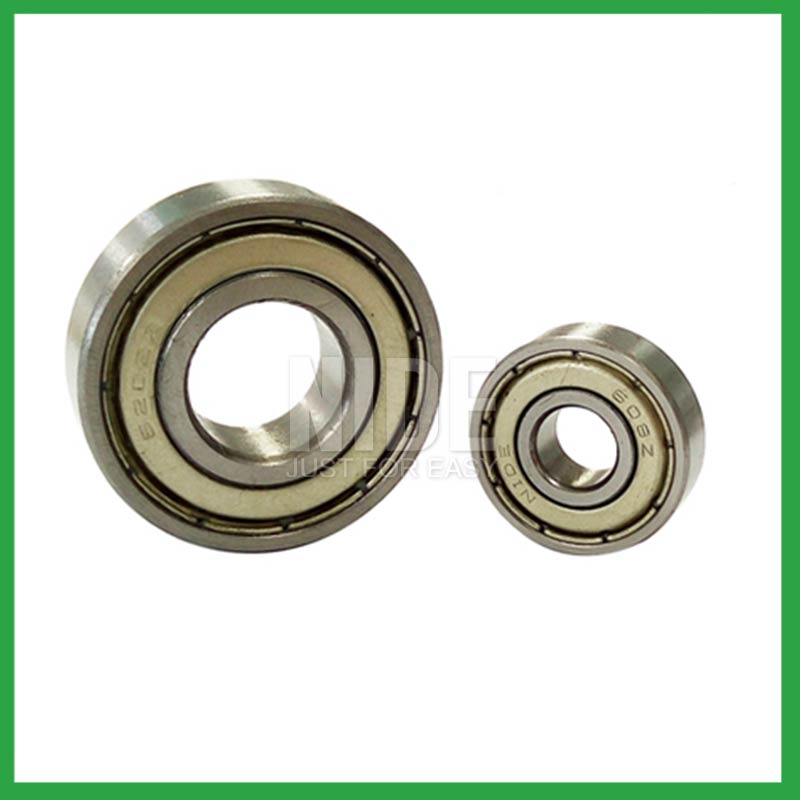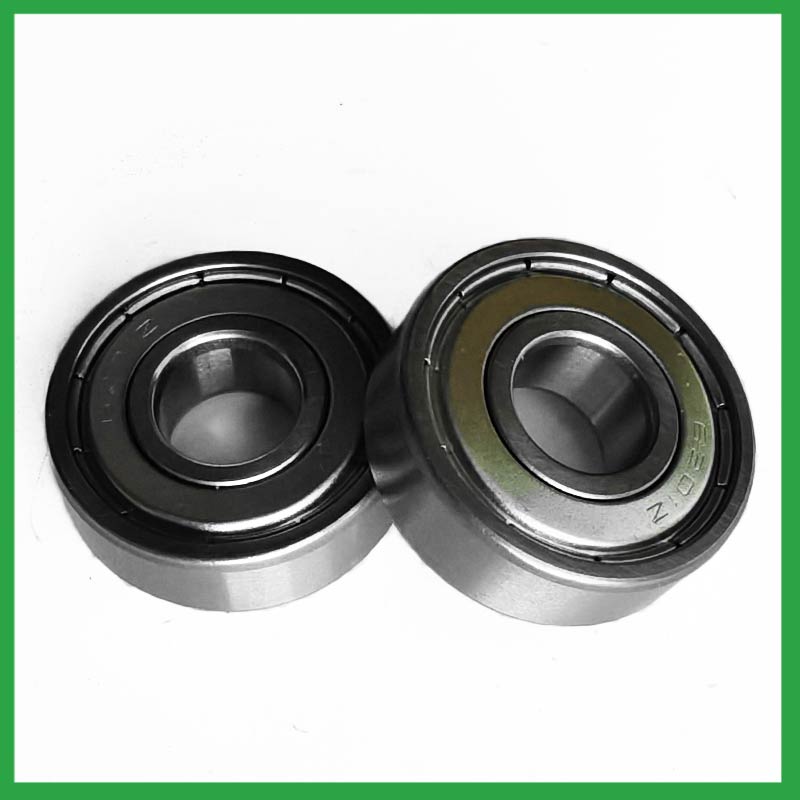PRODUCTS
CONTACT US
Ningbo Nide International Co., Ltd.
一一
· Contact person:Jack Zeng
· Mob/Whatspp/WeChat:0086-13738869026
· Email:emarketing@nide-group.com;marketing4@nide-group.com
· Add:No. 169, Wohushan Road, Daqi Subdistrict, Beilun District, Ningbo, China

Nide team could manufacture ball bearing as per customer’s drawing and samples.
If customer only has samples, we could also design drawing fo r our customer.
We also provide customized service.
Our ball bearing is widely applied the different industrials.
Established in 2010, Ningbo Haishu Nide International Co., Ltd is a company devoted in the field of electric motors manufacturing, providing one-stop service for its customers. Nide has three main business divisions. The first division is to provide different kinds of motor manufacturing machinery, including stand along machine, fully-auto complete line for armature and stator production, and the motor assembly line. The second division is to supply the full range of thermal protector,commutator,shaft,motor cover and lamination,insulation paper,ball bearing,etc. The third division is to provide technical support and consulting, project support and turn-key service for some motor manufacturing.

| Parameter | Information |
| Product Name | ball bearing gauge |
| Place of Origin | Ningbo,Zhejiang |
| Brand Name | Nide |
| Material | stainless steel, etc. |
| Type | Ball |
| Warranty | 3months-1year |
| Port | Ningbo/Shanghai |
| Application | chemical equipment, etc. |
| Size(mm) | customize |
| Color | gray+customized |
| Precision Rating | as per customer's requirement |
| Certification | ISO 9001 Certification,CE-stator coil lacing machine,CE-stator coil forming machine,etc |
| Feature | Good wear resistance,High precision...etc |
| Packaging Details | Suitable for sea transportation |
| Service | one-stop service |
| Model Number | ball bearing |
| Supply Ability | 100000-500000 Piece/Pieces per Month |
| Lead time (days) | 15-20 (To be negotiated) |
Please note: The above table data is for reference only. For specific information, please contact us.
The precision range of ball bearing gauge is from ABEC7 to ABEC9, with a particle size of 0.3 μ m. Among them, ABEC9's ball bearings have the best precision range and are widely used in the electronics industry, precision measurement industry, and so on.
Before use, the model, size, and design of the ball bearing should be confirmed to ensure suitable application;
During installation, the installation load of the ball bearing should be minimized as much as possible to avoid unnecessary damage;
The bearing shaft and the bearing frame should be stable at the same time to avoid excessive tension.
Ball bearings have many advantages, making them highly competitive in the market.
Firstly, they are very durable and have good wear performance, making their service life longer than many other types of bearings.
Secondly, they are easy to install and can provide low friction performance in various applications.
Thirdly, they require a relatively low level of maintenance, making them cost-effective.
In addition, compared to many other types of bearings, their purchase cost is relatively low, making them an economical choice.




ball bearing gauge---FAQs Guide
2.What are the advancements and innovations in ball bearing gauge technology that have emerged in recent years?
3.How do manufacturers ensure the quality and reliability of ball bearing gauge through material selection and precision machining?
4.What are the considerations for choosing between open, shielded, or sealed ball bearing gauge in specific applications?
5.Are there miniature ball bearing gauge designed for use in precision instruments and small-scale mechanisms?
6.About ball bearing gauge,Will you check the products before shipment?
7.Can ball bearing gauge operate in high-speed applications, and what design features make them suitable for such conditions?
8.Can ball bearing gauge be used in both vertical and horizontal orientations?
9.Where can ball bearing gauge be used?
10.How do different ball bearing gauge designs, such as deep groove, angular contact, or thrust bearings, cater to specific applications?
11.What is a ball bearing?
12.What are the after-sales services available for ball bearing gauge?
13.As a ball bearing gauge manufacturer,Your product certifications?
14.What are the common materials used in ball bearing gauge manufacturing?
15.Are there ball bearing gauge designed for use in critical medical equipment?
16.Can ball bearing gauge handle shock loads and high-impact conditions in heavy machinery?
1.Are there specific ball bearing gauge designed for applications in the aerospace and aviation industries, and what standards do they adhere to?
Airframe control ball bearing gauge are specialized bearings tailored for aircraft structures, particularly control systems and surfaces. Designed for low-speed oscillatory applications, they offer precision and support, effectively managing misalignments and flight-induced stresses.
Airframe Control bearings are lightweight, corrosion-resistant, grease-lubricated, and are sealed on most occasions. They come in precision grades for running accuracy.
2.What are the advancements and innovations in ball bearing gauge technology that have emerged in recent years?
Significant advancements have been made in ball bearing gauge steels over the years. Modern, ultra-clean bearing steels contain fewer and smaller non-metallic particles, giving ball bearings greater resistance to contact fatigue.

3.How do manufacturers ensure the quality and reliability of ball bearing gauge through material selection and precision machining?
High-precision measuring instruments, such as micrometers and gauges, are used to check the dimensions of the rings and balls to ensure they meet tight tolerances. Surface Finish Inspection: Surface finish is assessed using profilometers to ensure the required smoothness and low friction characteristics.
4.What are the considerations for choosing between open, shielded, or sealed ball bearing gauge in specific applications?
While sealed bearings offer superior protection and maintenance advantages, shielded ball bearing gauge can be more suitable in situations where minimal friction and operating temperature are crucial. It's essential to assess the operational environment and demands before making a selection.

5.Are there miniature ball bearing gauge designed for use in precision instruments and small-scale mechanisms?
Miniature bearings, despite their small size, play a significant role in various industries and applications. These compact powerhouses, typically measuring less than one inch in outer diameter, offer exceptional precision, durability, and reliability. Miniature bearings find extensive use in precision instruments and robotics.
6.About ball bearing gauge,Will you check the products before shipment?
Yes, We have a professional QC team. Products will be strictly inspection before shipment.

7.Can ball bearing gauge operate in high-speed applications, and what design features make them suitable for such conditions?
They have very low rolling friction and are optimized for low noise and low vibration. This makes them ideal for high-speed applications. ball bearing gauge are comparatively easy to install and require minimal maintenance.
8.Can ball bearing gauge be used in both vertical and horizontal orientations?
Sleeve Bearings: Sleeve bearings, also known as plain bearings, employ a simple yet effective mechanism. A cylindrical sleeve separates the rotating shaft from the stationary portion of the bearing, reducing friction and enabling smooth rotation. Sleeve bearings are characterized by their quiet operation, cost-effectiveness, and suitability for horizontal mounting orientations.
Ball Bearings: Ball bearings introduce small metal balls between the moving parts, providing enhanced durability and reduced friction. This design allows for smoother and more efficient rotation, making ball bearings well-suited for high-performance applications and vertical installations.

9.Where can ball bearing gauge be used?
ball bearing gauge are very versatile. They can be designed to withstand radial loads, axial loads and combined radial/axial loads at various operating speeds. These characteristics, combined with the relative cost and compactness of the design, give it universal appeal within the industry. Ball bearings are widely used in electric motors, gear reducers and pumps. Serving the automotive, home appliances, aerospace, oil and gas drilling, and mining sectors.
10.How do different ball bearing gauge designs, such as deep groove, angular contact, or thrust bearings, cater to specific applications?
Deep groove ball bearing gauge: Deep groove ball bearings are the most common type. They can handle both radial and axial loads. Angular contact ball bearings: Angular contact ball bearings have higher than average internal axial clearance. They can handle axial loads in one direction and moderate radial loads.

11.What is a ball bearing?
A ball bearing is a type of rolling-element bearing that uses balls to maintain the separation between the bearing races.
The purpose of a ball bearing is to reduce rotational friction and support radial and axial loads. It achieves this by using at least two races to contain the balls and transmit the loads through the balls. In most applications, one race is stationary and the other is attached to the rotating assembly (e.g., a hub or shaft). As one of the bearing races rotates it causes the balls to rotate as well. Because the balls are rolling they have a much lower coefficient of friction than if two flat surfaces were sliding against each other.
Ball bearings tend to have lower load capacity for their size than other kinds of rolling-element bearings due to the smaller contact area between the balls and races. However, they can tolerate some misalignment of the inner and outer races.
12.What are the after-sales services available for ball bearing gauge?
If you find problems or failures in the assembly or use of the bearings , which needs to consult and other services, please feedback to Nide International in time.

13.As a ball bearing gauge manufacturer,Your product certifications?
ISO9001:2015 certificate,ISO 9001 Certification,CE-stator,etc.
14.What are the common materials used in ball bearing gauge manufacturing?
Most ball bearing gauge are made of a type of steel known as high carbon chromium steel, often called chrome steel. This is used for reasons of cost and durability. Bearings are also made from other materials such as stainless steel, ceramics and plastic.

15.Are there ball bearing gauge designed for use in critical medical equipment?
Precision ball bearing gauge are among critical components in medical devices that are vital to ensuring patient safety. Correct choice of suitable ball and ring materials and the right product design can ensure high-precision bearings — and medical devices — have a long service life.
Precision bearings are used in a wide variety of medical devices including surgical power tools, ventilators and heart pumps — and patient safety depends on them all. Whatever the device, there is an onus on medical device original equipment manufacturers (OEMs) to ensure that the right type of bearings are chosen, and fit precisely into the application.
16.Can ball bearing gauge handle shock loads and high-impact conditions in heavy machinery?
As a general rule, ball bearing gauge are used at higher speeds and lighter loads than are roller bearings. Roller bearings perform better under shock and impact loading. Ball bearings tolerate misalignment better than roller bearings do. Roller bearings can handle heavy combined radial and thrust loads.


